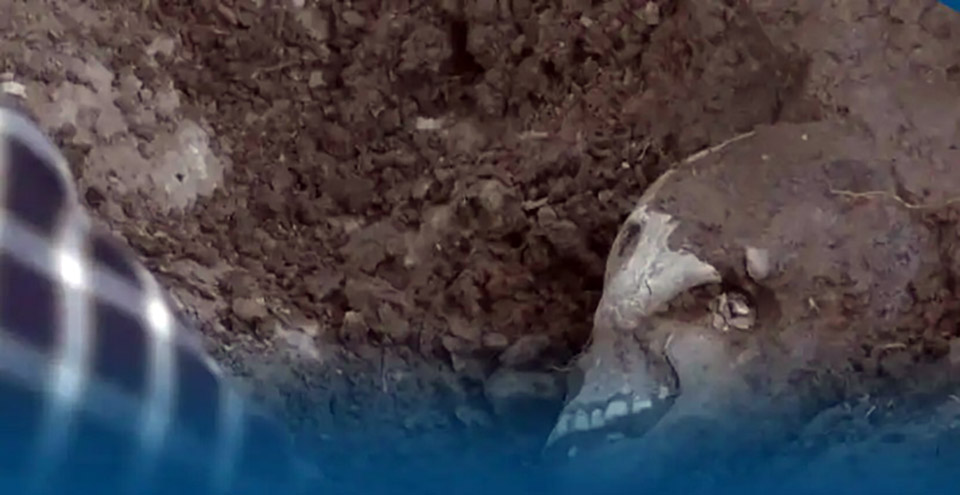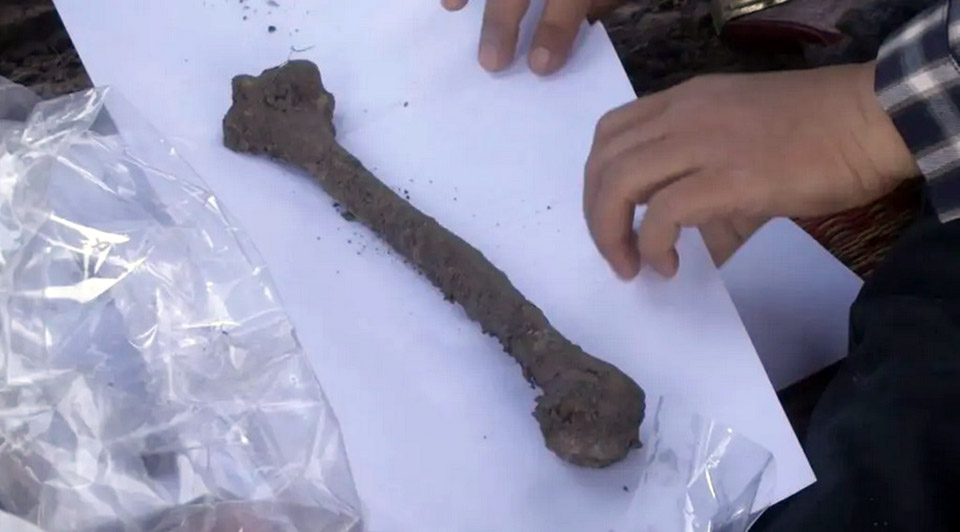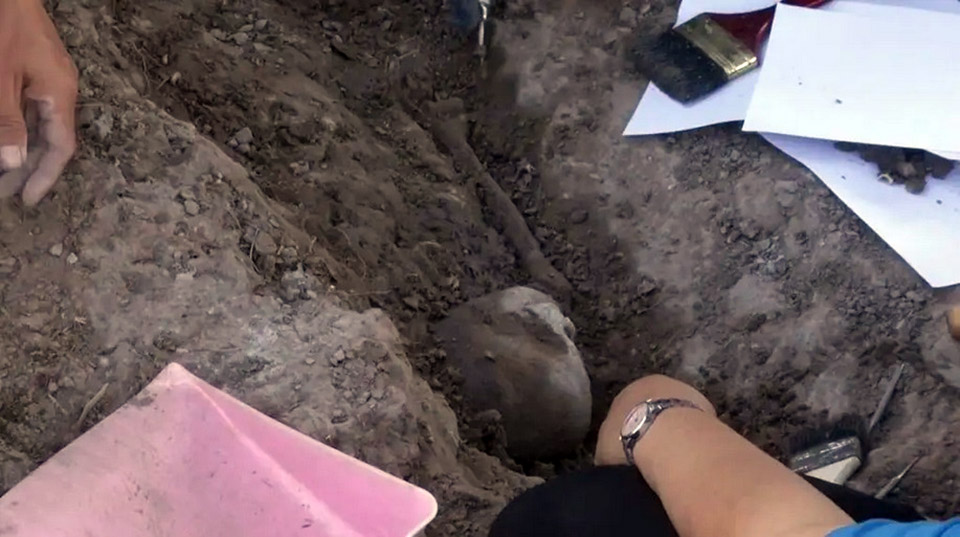
KHON KAEN, Thailand – A human skeleton dating back to the Iron Age, estimated to be between 2,500 and 1,500 years old, was discovered in a cassava field in Wiang Kao District, Khon Kaen, January 7.
The skeleton was found in a cassava field in Ban Nong Du, Nai Mueang Subdistrict, Wiang Kao District, just 200 meters from the Dinosaur Research Center and Museum. A farmer plowing the field on January 4 noticed a skull exposed due to soil erosion caused by water, buried approximately one meter below the original surface. Archaeologists suspect the site was an ancient settlement, where burials were commonly conducted near stream banks.
This morning (January 7), archaeologists from the Fine Arts Department Region 8 in Khon Kaen examined the site and confirmed the skeleton’s ancient origins. The skeleton, found in a relatively complete state, was lying on its side with one arm underneath. The team excavated the remains to preserve them, as further erosion could have damaged the evidence or washed it away. Nearby, fragments of ancient pottery were also discovered scattered around the area.
Ms. Tipawan Wongassapaiboon, a senior archaeologist at the Fine Arts Department Region 8, stated that villagers had previously found small iron tools resembling blades, along with red clay pottery decorated with cord patterns. These artifacts are characteristic of items from the Iron Age, dating back 2,500–1,500 years. This burial site is believed to belong to a prehistoric community that wrapped their deceased in mats made from reeds or bamboo and offered grave goods to the dead.

The skeleton is identified as female, who likely died between the ages of 30–35. This assessment is based on the condition of her teeth, which were fully developed with three molars intact and relatively unworn. Comparisons were made with studies on teeth from similar Iron Age sites, such as Ban Chiang in Udon Thani, where individuals aged 40–45 typically show significant tooth wear down to the roots due to diet and lifestyle.
Ms. Rungnapa Chanpho, the mayor of Nai Mueang Subdistrict and sister of the cassava field’s owner, revealed plans to develop the site as a tourist attraction. The area has historical significance, as local elders recount it being used as a weapons storage site during World War II. The site, known locally as “Khok Sanam Bin” (Airport Hill), is remembered as a refuge where ancestors hid from bombs and helicopters during the war.
Following the discovery of the ancient skeleton, 50 monks visiting Wiang Kao for a religious event stopped by the site to perform blessing rituals for the deceased. (TNA)












